Optimization of the Parameters for Gravity Heat Pipes in Coal Gangue Hills by Measuring Thermal Power Generation
Abstract
:1. Introduction
2. Experimental Setup and the Principle of Thermoelectric Power Generation
2.1. Introduction to Experimental Setup
2.2. Uncertainty Analysis
3. Single-Factor Experiments
3.1. Inclination Angle of the GHP
3.2. Working Fluid Height of the GHP
3.3. Initial Absolute Pressure
3.4. Heating Temperature
4. Response Surface Experiment
5. Field Industrial Test
6. Conclusions
- (1)
- In a laboratory, we established a GHP test system to investigate the effects of various independent variables on the power coefficient of thermoelectric power generation per unit area, where the dependent variable is the power coefficient. The four independent variables tested are tilt angle, heating temperature, initial absolute pressure, and working fluid height. Single-factor tests were conducted, and the results indicated that the tilt angle variable had less impact on the power coefficient of thermoelectric power generation per unit area than the other three variables. Therefore, heating temperature, initial absolute pressure, and working fluid height are identified as the more significant independent variables requiring further investigation.
- (2)
- Through six sets of comparative tests, the value ranges for heating temperature, initial absolute pressure, and working fluid height, in this study, were analyzed and determined based on measurement indices that exhibited stable voltage and current output from the thermoelectric generation sensor. Based on these findings, the values are 353.15 K < T < 473.15 K, H > 100 mm, and P > 0.011 MPa.
- (3)
- The three-factor three-level response surface method was employed to optimize the parameters influencing the power coefficient of thermoelectric power generation per unit area. A multiple quadratic response surface regression model was established, and the contribution of each factor to the power coefficient was analyzed. The test results indicate that the power coefficient of thermoelectric power generation per unit area is maximized at H = 200.001 mm, P = 0.002 MPa, and T = 413.15 K, with a value of 0.122981 W/(m2·K).
- (4)
- A test system for coal gangue hill GHP temperature difference power generation was established. The temperature difference between the heat dissipation end of the GHP and the surrounding ambient temperature was utilized for power generation. This served as a measure of the heat dissipation efficiency of the GHP. Additionally, a solution was provided for secondary utilization of abandoned electrical energy from coal gangue hills through temperature difference power generation. During the research process, it was observed that the voltage generated by temperature difference power generation fluctuated in a regular pattern due to the internal circulation of the working fluid in the GHP, as shown in Figure 7. This can reflect the operational efficiency of the GHP to some extent. However, in terms of power generation output, the amount of electricity generated in this experiment was relatively small. Therefore, in future experiments, it is necessary to increase the area of the temperature difference power generation unit to enhance the power output.
- (5)
- The feasibility of utilizing GHPs for the remediation of high-temperature zones in deep coal gangue hills and the feasibility of temperature difference power generation using the heat dissipation section of GHPs were demonstrated through on-site industrial experiments. Based on the on-site experiments, it was found that the power generation potential of gravity heat pipes is enormous. This discovery opens up possibilities for the management of coal mine gangue hills and the utilization of waste heat inside these hills for electricity generation. For future research, we recommend focusing on energy utilization and exploring methods to enhance the conversion efficiency of thermal energy within gangue hills into electrical energy.
Author Contributions
Funding
Data Availability Statement
Acknowledgments
Conflicts of Interest
References
- Li, J.Y.; Wang, J.M. Comprehensive utilization and environmental risks of coal gangue: A review. J. Clean Prod. 2019, 239, 18. [Google Scholar] [CrossRef]
- Hu, Z.Q.; Zhu, Q.; Xu, J.J.; Zhang, X. Effect of Bactericides on Control of Acidification Pollution and Spontaneous Combustion of Coal Gangue Dumps in China and Its Mechanism. Sustainability 2020, 12, 6697. [Google Scholar] [CrossRef]
- Wang, G.; Liu, Q.Q.; Yan, G.Q.; Sun, L.L.; Qu, H.Y.; Han, Q.F. Control system of spontaneous combustion in coal gangue dumps—A case study at Yuquan coal mine in China. Teh. Vjesn. 2017, 24, 291–300. [Google Scholar]
- Li, X.P.; Zhang, J.; Ren, X.P.; Liu, Y.Q.; Zhou, C.H.; Li, T.Y. Study on condition analysis and temperature prediction of coal spontaneous combustion based on improved genetic algorithm. AIP Adv. 2022, 12, 10. [Google Scholar] [CrossRef]
- Han, S.M.; Wang, Y.X.; Li, Y.; Shi, K.Y. Investigation of bacterial diversity in Cajanus cajan-planted gangue soil via high-throughput sequencing. Bioengineered 2021, 12, 6981–6995. [Google Scholar] [CrossRef]
- Wang, H.Y.; Tan, B.; Zhang, X.D. Research on the technology of detection and risk assessment of fire areas in gangue hills. Environ. Sci. Pollut. Res. 2020, 27, 38776–38787. [Google Scholar] [CrossRef]
- Zhang, D.; Yang, X.S.; Deng, J.; Wen, H.; Xiao, Y.; Jia, H. Research on coal spontaneous combustion period based on pure oxygen adiabatic oxidation experiment. Fuel 2021, 288, 7. [Google Scholar] [CrossRef]
- Zhang, W.D.; Xiao, Y.; Wang, X.F.; Lv, Y. Soil nematode community characteristics around the Gangue hill of Fushun West Open-pit mine. Helminthologia 2011, 48, 116–123. [Google Scholar] [CrossRef]
- Liu, Y.G.; Yu, L.N.; Zhou, A.G. Analysis of Coal Gangue Pollution Control Technology. In Proceedings of the 2nd International Conference on Advanced Materials and Engineering Materials (ICAMEM 2012), Beijing, China, 29–30 December 2012; Trans Tech Publications Ltd.: Beijing, China, 2012; pp. 941–944. [Google Scholar]
- Song, S.J.; Peng, R.S.; Wang, Y.; Cheng, X.; Niu, R.L.; Ruan, H. Spatial distribution characteristics and risk assessment of soil heavy metal pollution around typical coal gangue hill located in Fengfeng Mining area. Environ. Geochem. Health 2023, 45, 7215–7236. [Google Scholar] [CrossRef]
- Ren, W.X.; Liu, X.; Sun, Z.G.; Guo, Q. Internal Heat Extraction by Gravity Heat Pipe for Spontaneous Combustion Remediation. Combust. Sci. Technol. 2021, 13. [Google Scholar] [CrossRef]
- Wu, S.T.; Zhou, B.; Wang, J.F.; Yang, Q.F.; Dong, W.Z.; Dong, Z.Y. Isotope radon measurement method to identify spontaneous combustion regions in coal gangue hills: Case study for a coal mine in China. Int. J. Coal Prep. Util. 2023, 13. [Google Scholar] [CrossRef]
- Jiang, X.Y.; Yang, S.Q.; Zhou, B.Z.; Song, W.X.; Cai, J.W.; Xu, Q.; Zhou, Q.C.; Yang, K. The variations of free radical and index gas CO in spontaneous combustion of coal gangue under different oxygen concentrations. Fire Mater. 2022, 46, 549–559. [Google Scholar] [CrossRef]
- Hua, C.Y.; Zhou, G.Z.; Yin, X.; Wang, C.Z.; Chi, B.R.; Cao, Y.Y.; Wang, Y.; Zheng, Y.; Cheng, Z.R.; Li, R.Y. Assessment of heavy metal in coal gangue: Distribution, leaching characteristic and potential ecological risk. Environ. Sci. Pollut. Res. 2018, 25, 32321–32331. [Google Scholar] [CrossRef] [PubMed]
- Mingao, Y.; Rongkun, P.; Shuijun, Y.; Hailin, J. Experiment study on rainwater influence explode of spontaneous combustion gangue dump. In Proceedings of the International Symposium on Mining Science and Safety Technology, Jiaozuo, China, 16–19 April 2007; Science Press Beijing: Jiaozuo, China, 2007; pp. 1801–1805. [Google Scholar]
- Zhao, N.; Zhang, Y.B.; Zhao, X.H.; Niu, J.R.; Shi, H.; Yang, N.; Gao, T.; Guo, L.N. Internal Temperature Variation on Spontaneous Combustion of Coal Gangue Dumps under the Action of a Heat Pipe: Case Study on Yinying Coal Mine in China. Sustainability 2022, 14, 9807. [Google Scholar] [CrossRef]
- Peng, H.; Jia, X.L. Experimental study on heat energy recovery and utilization of coal gangue hill based on gravity heat pipe. Energy Rep. 2022, 8, 220–229. [Google Scholar] [CrossRef]
- Wu, D.; Wang, Y.Y.; Wang, M.C.; Wei, C.; Hu, G.Q.; He, X.L.; Fu, W. Basic Characteristics of Coal Gangue in a Small-Scale Mining Site and Risk Assessment of Radioactive Elements for the Surrounding Soils. Minerals 2021, 11, 647. [Google Scholar] [CrossRef]
- Zhang, Y.P.; Quan, X.; Ning, N.; Wang, J.G. Experimental Study on Heat Extraction from Coal Pile by Heat Pipe. In Proceedings of the 5th International Conference on Advances in Energy Resources and Environment Engineering (ICAESEE), Chongqing, China, 6–8 December 2019; Iop Publishing Ltd.: Chongqing, China, 2019. [Google Scholar]
- Yang, L.; Min, Z.; Sarwesh, P.N.; Chyu, M.K. Numerical investigation on hybrid-linked jet impingement heat transfer based on the response surface methodology. Numer. Heat Tranf. A-Appl. 2016, 70, 1297–1312. [Google Scholar] [CrossRef]
- Vinod, R.; Basavarajappa, Y.H. Recent advances in loop heat pipe. In Proceedings of the 4th International Conference on Advanced Research in Mechanical, Materials and Manufacturing Engineering (ICAMMME), Bengaluru, India, 10–11 July 2020; Elsevier: Bengaluru, India, 2020; pp. 389–391. [Google Scholar]
- Akkus, Y.; Nguyen, C.T.; Celebi, A.T.; Beskok, A. A first look at the performance of nano-grooved heat pipes. Int. J. Heat Mass Transf. 2019, 132, 280–287. [Google Scholar] [CrossRef]
- Hashimoto, M.; Akizuki, Y.; Sato, K.; Ueno, A.; Nagano, H. Proposal, transient model, and experimental verification of loop heat pipe as heating device for electric-vehicle batteries. Appl. Therm. Eng. 2022, 211, 14. [Google Scholar] [CrossRef]
- Wang, G.L.; Zhao, G.Q.; Li, H.P.; Guan, Y.J. Research on optimization design of the heating/cooling channels for rapid heat cycle molding based on response surface methodology and constrained particle swarm optimization. Expert Syst. Appl. 2011, 38, 6705–6719. [Google Scholar] [CrossRef]
- Zhang, L.; Jiang, Y.; Chen, W.; Zhou, S.; Zhai, P. Experimental and numerical investigation for hot water boiler with inorganic heat pipes. Int. J. Heat Mass Transf. 2017, 114, 743–747. [Google Scholar] [CrossRef]
- Salehi, H.; Hormozi, F. Prediction of Al2O3-water nanofluids pool boiling heat transfer coefficient at low heat fluxes by using response surface methodology. J. Therm. Anal. Calorim. 2019, 137, 1069–1082. [Google Scholar] [CrossRef]
- Tian, Z.X.; Zhang, J.R.; Wang, C.L.; Guo, K.L.; Liu, Y.; Zhang, D.L.; Tian, W.X.; Qiu, S.Z.; Su, G.H. Experimental evaluation on heat transfer limits of sodium heat pipe with screen mesh for nuclear reactor system. Appl. Therm. Eng. 2022, 209, 12. [Google Scholar] [CrossRef]
- Wang, H.G.; Bao, Y.H.; Liu, M.; Zhu, S.; Du, X.P.; Hou, Y. Experimental study on dynamic characteristics of cylindrical horizontal axially rotating heat pipe. Appl. Therm. Eng. 2022, 209, 14. [Google Scholar] [CrossRef]
- Zhang, X.; Jiang, D.Y.; Wang, H.; Liu, X.D. Experimental analysis on the evaporator startup behaviors in a trapezoidally grooved heat pipe. Appl. Therm. Eng. 2021, 199, 8. [Google Scholar] [CrossRef]
- Wang, H.Y.; Fang, X.Y.; Du, F.; Tan, B.; Zhang, L.; Li, Y.C.; Xu, C.F. Three-dimensional distribution and oxidation degree analysis of coal gangue dump fire area: A case study. Sci. Total Environ. 2021, 772, 11. [Google Scholar] [CrossRef]
- Nookaraju, B.C.; Kurmarao, P.S.V.; Nagasarada, S.; Karthikeyan, R.; Vinay, A. Optimization of Process Parameters of Helical Grooved Heat pipe Using Response Surface Methodology. In Proceedings of the 7th International Conference of Materials Processing and Characterization (ICMPC), Gokaraju Rangaraju Inst Engn & Technol, Hyderabad, India, 17–19 March 2017; Elsevier: Hyderabad, India, 2017; pp. 5262–5271. [Google Scholar]
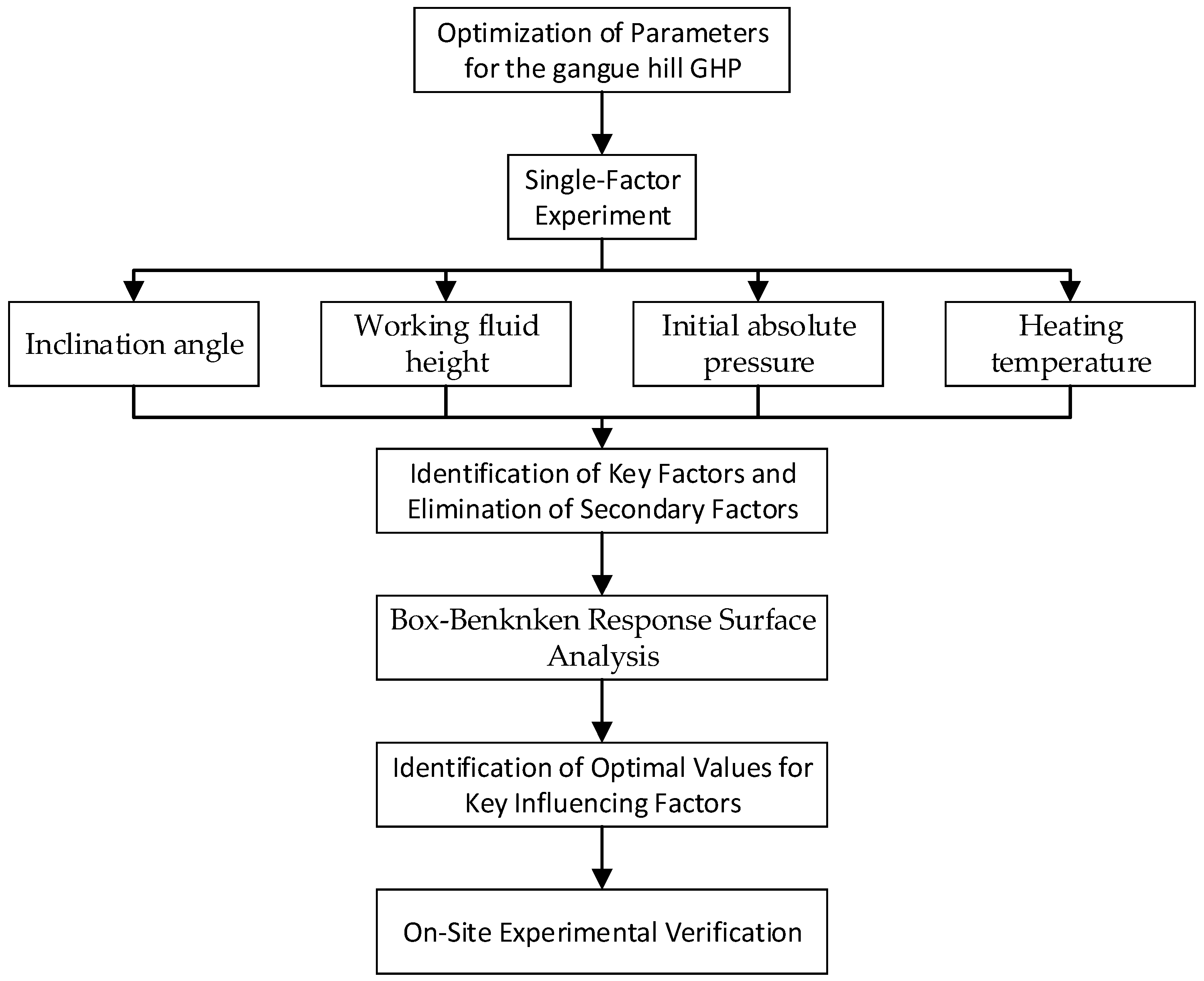




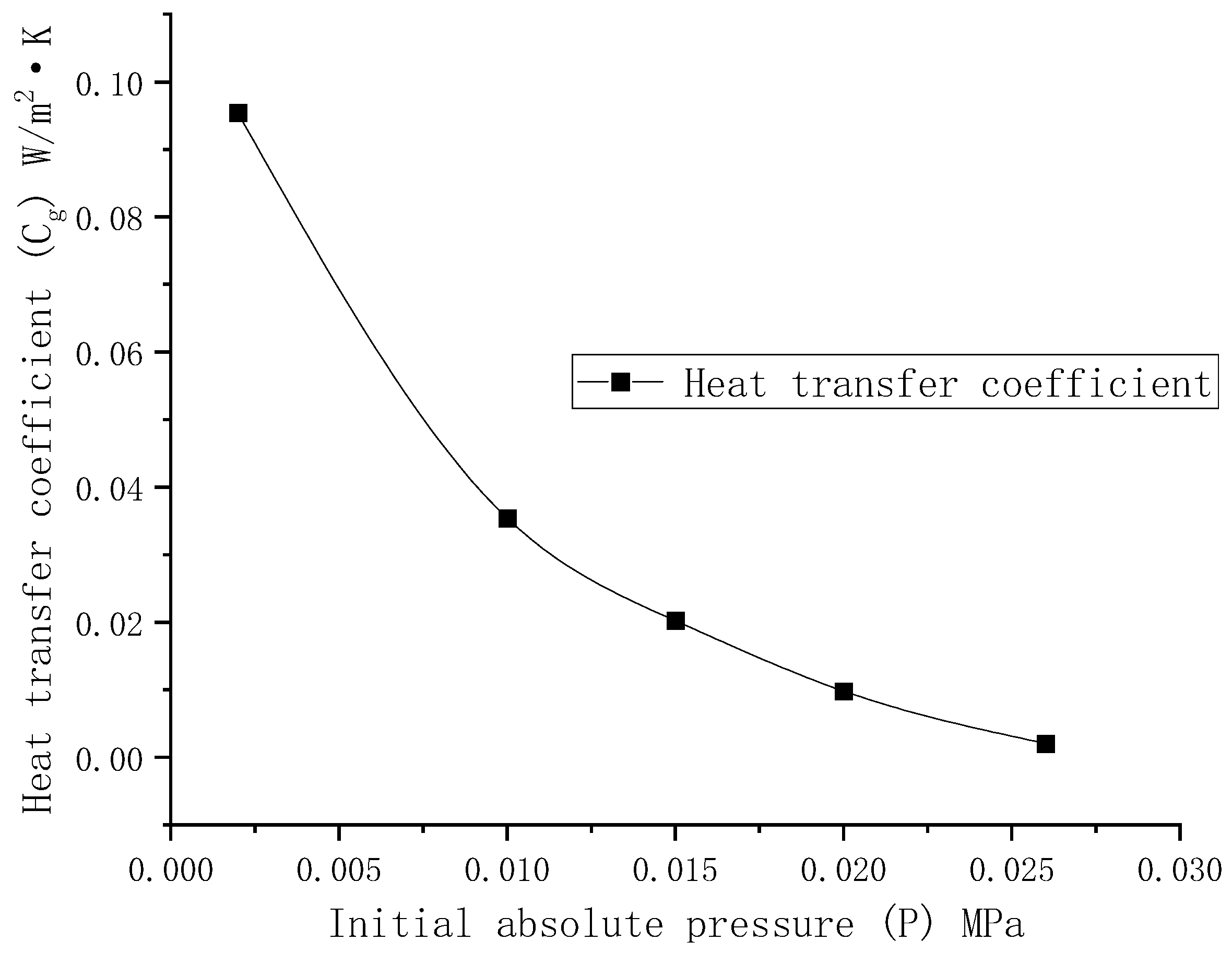
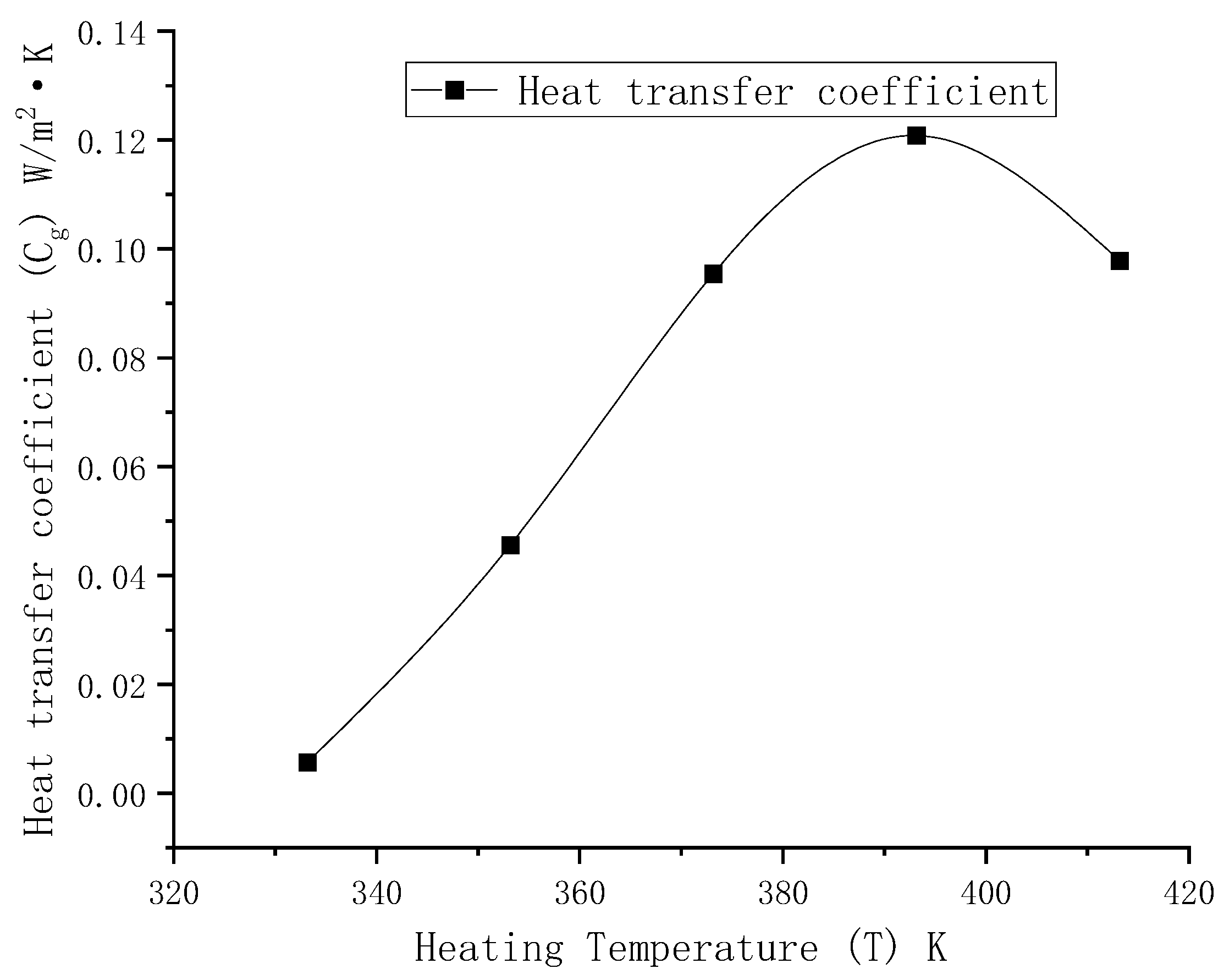
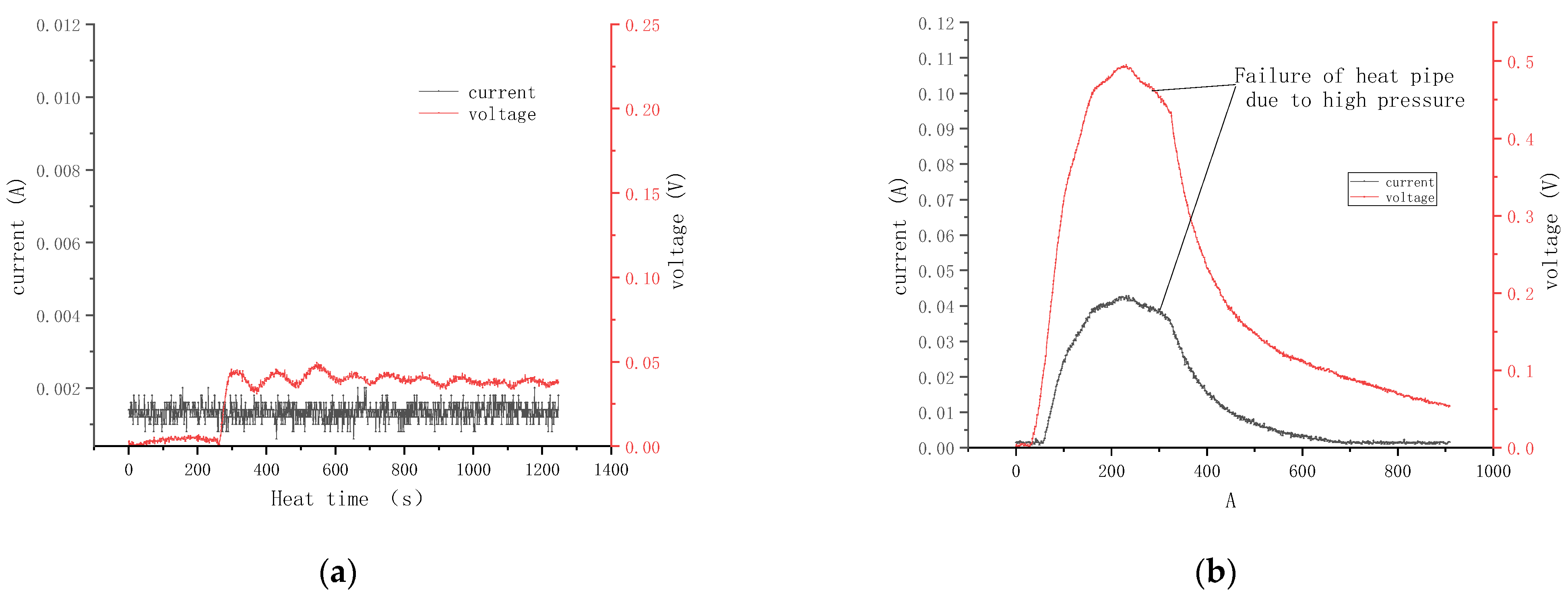
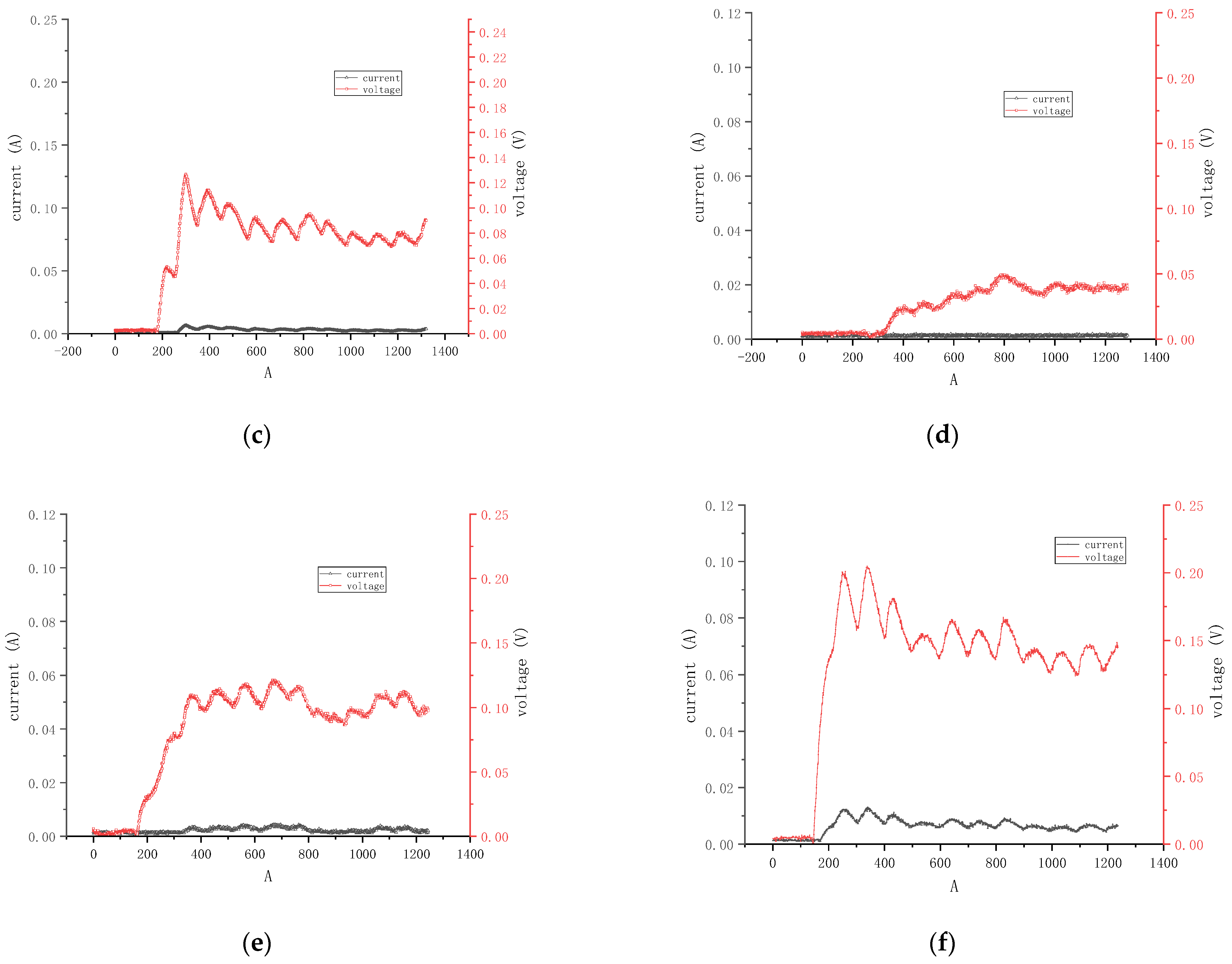
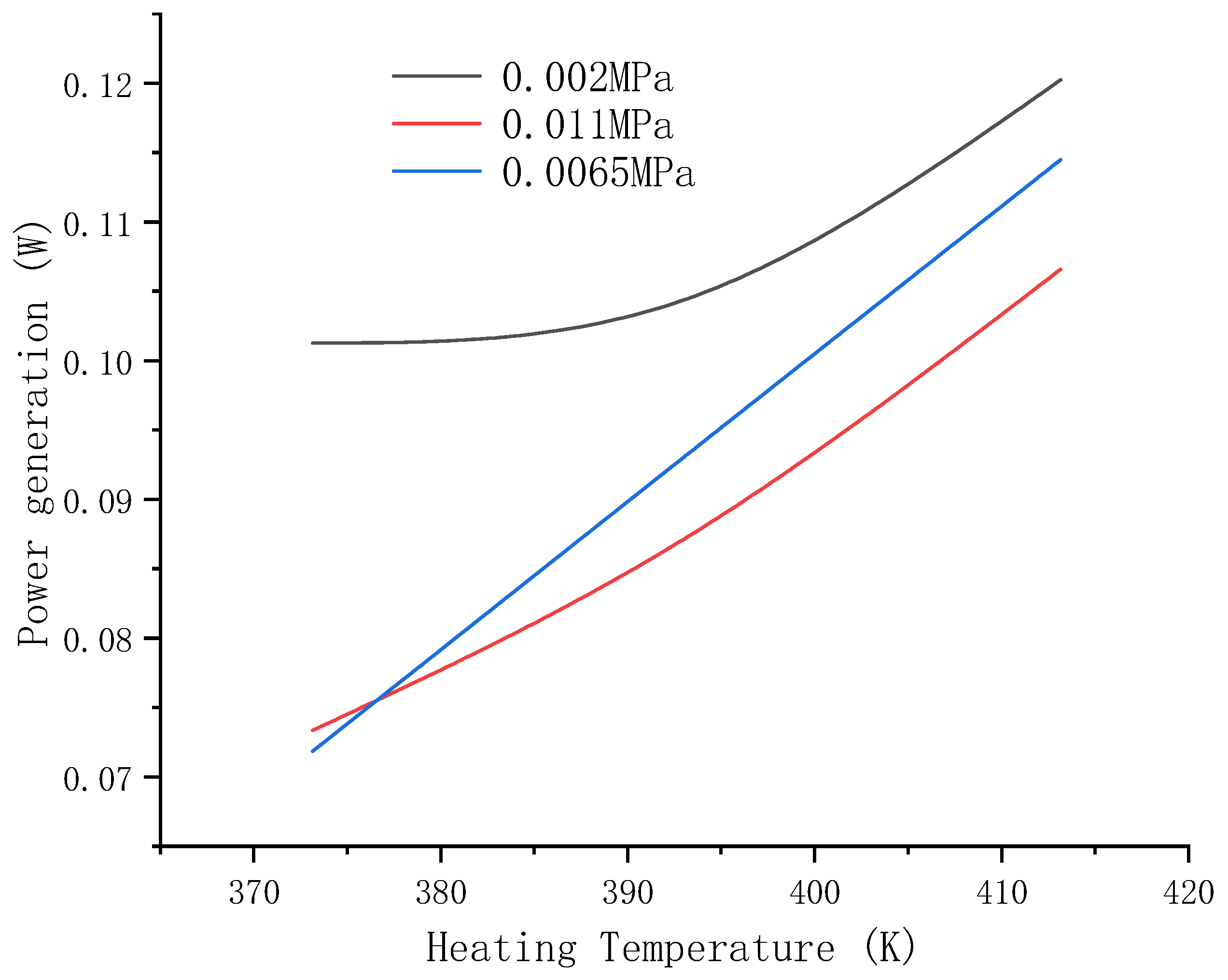
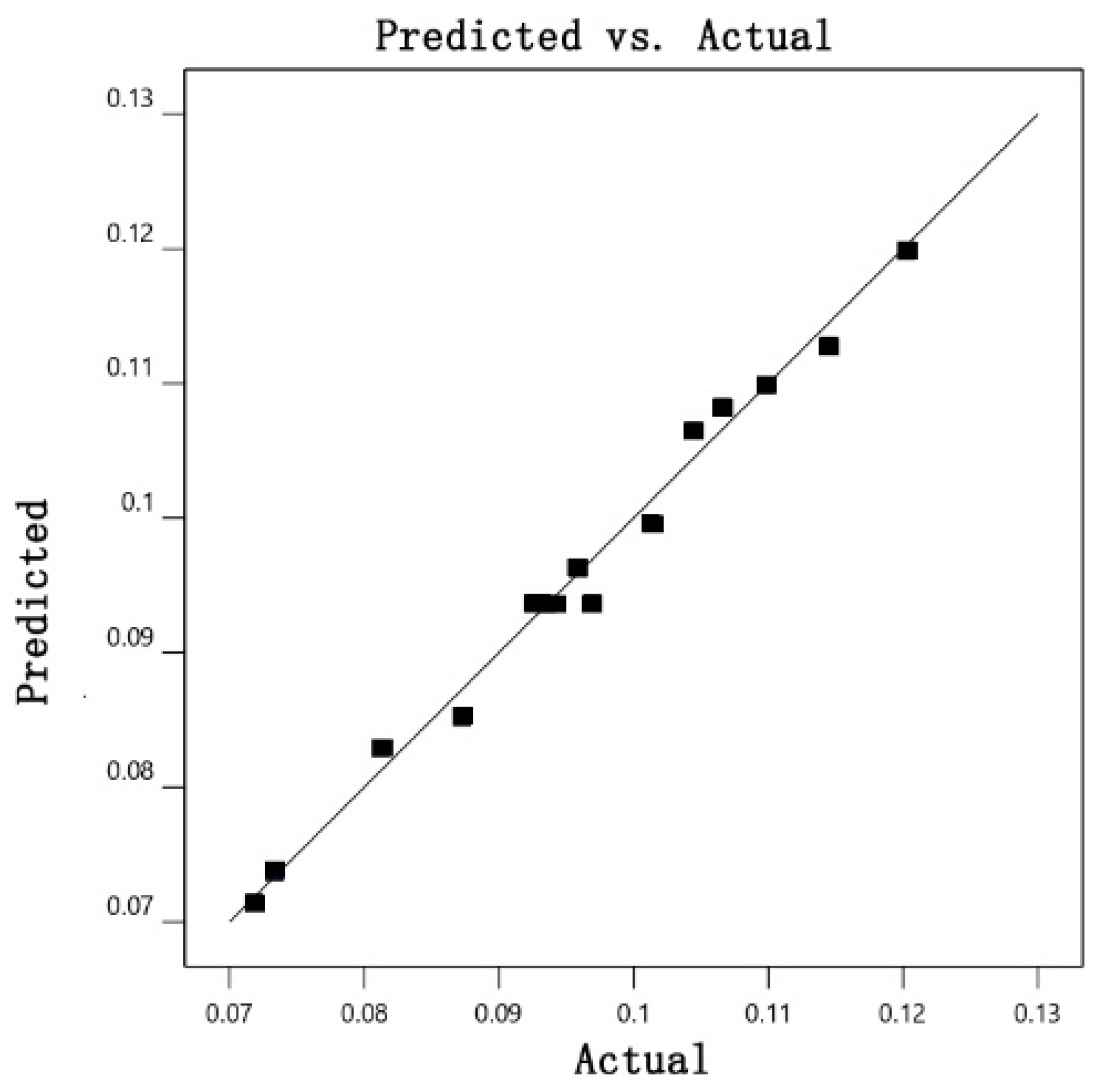
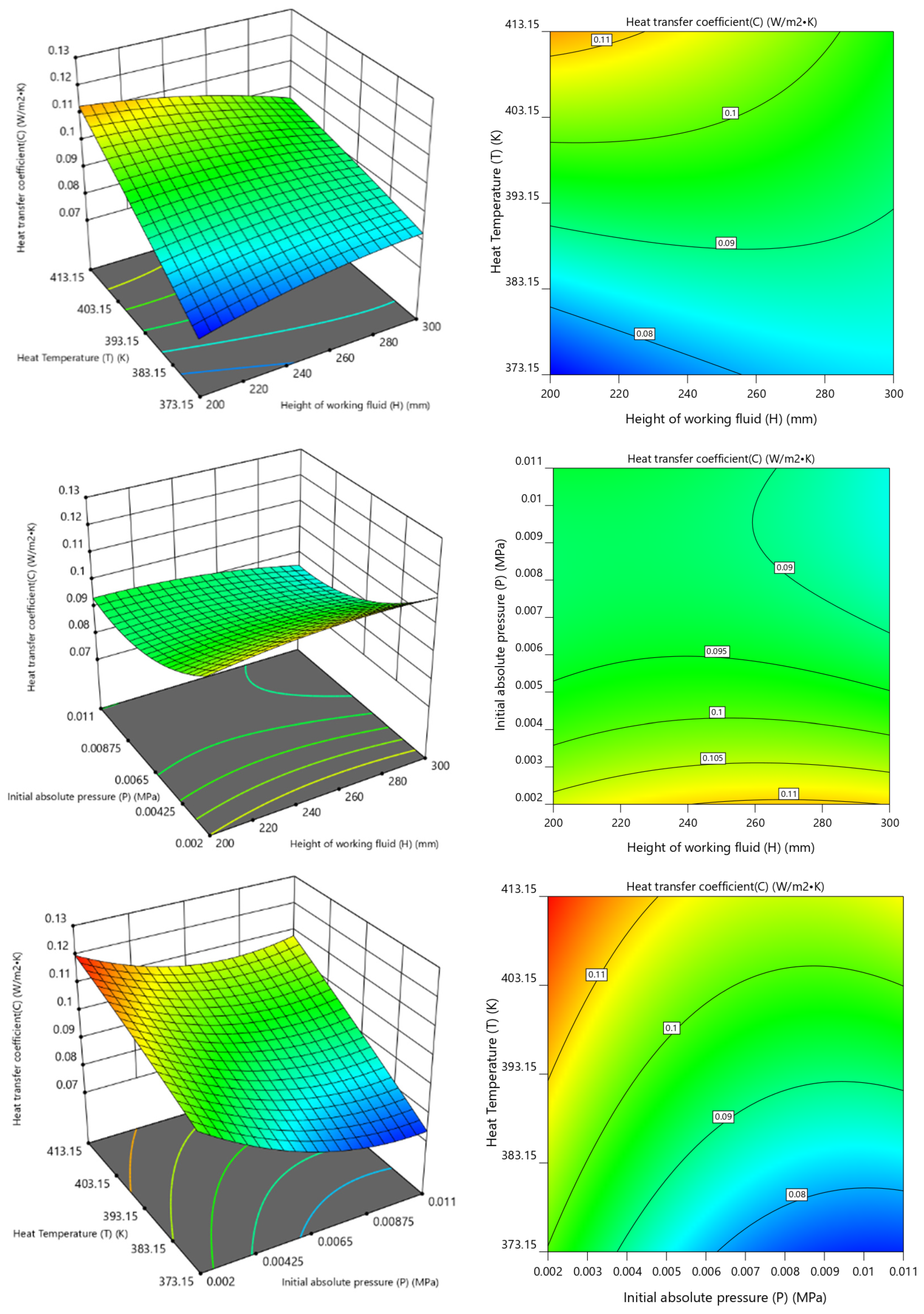
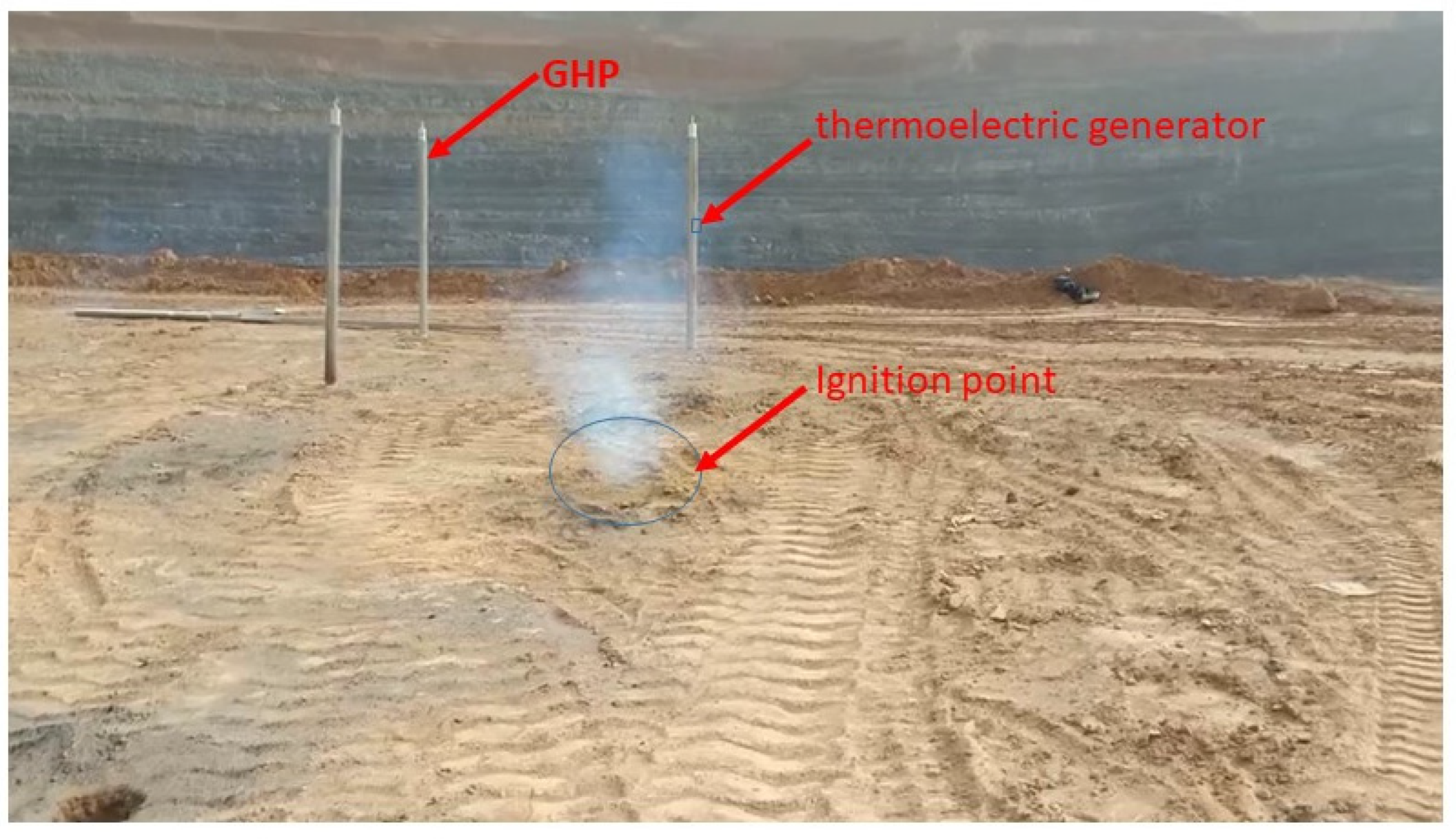
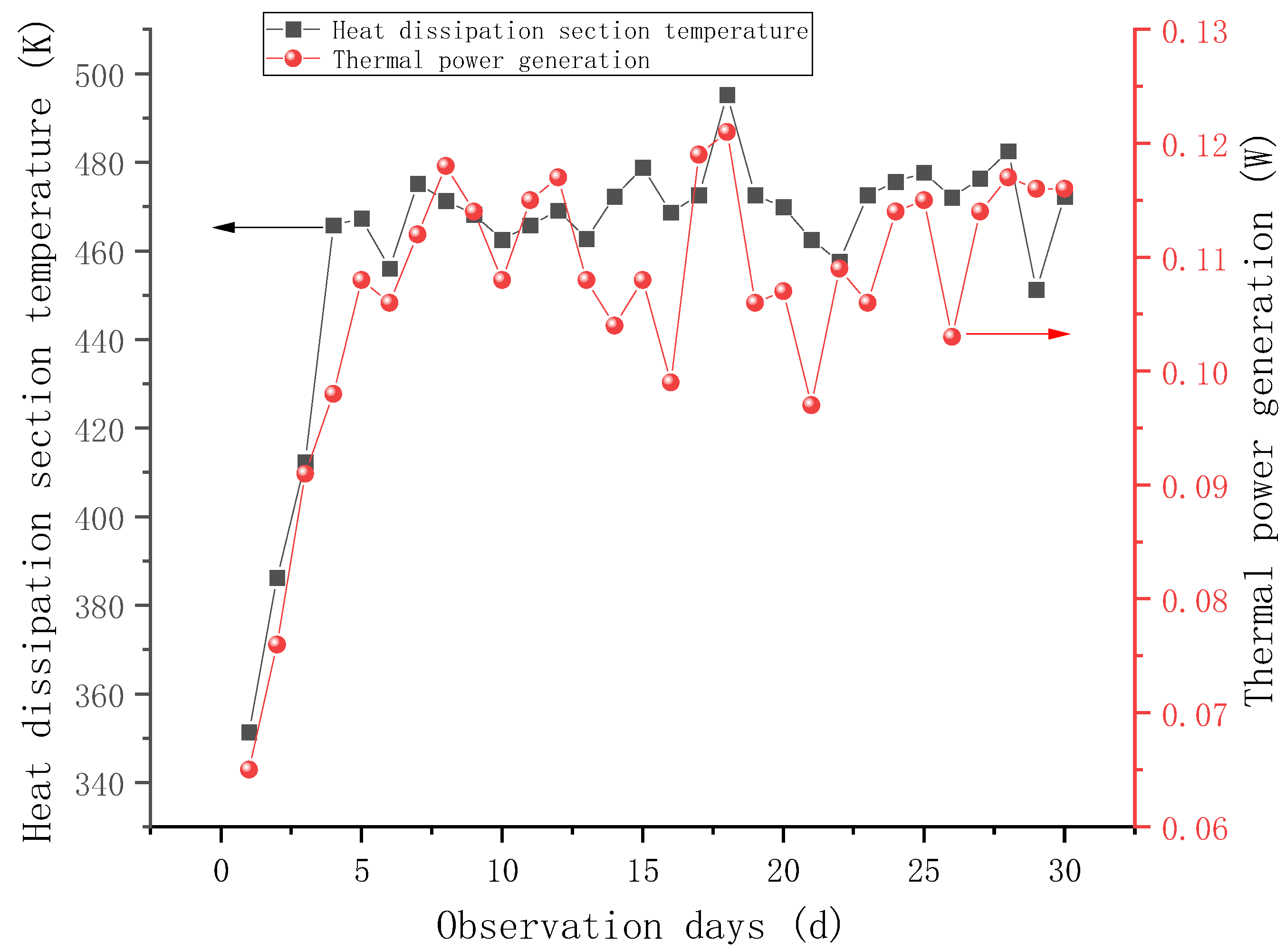
| Properties | Specifications |
|---|---|
| Total length of heat pipe | 1000 mm |
| Evaporator length | 250 mm |
| External diameter of heat pipe | 25 mm |
| Internal diameter of heat pipe | 18 mm |
| Size of thermoelectric generator | 20 × 40 mm |
| Working fluid | water |
| Material of hear pipe | glass |
| Temperature sensor location (from bottom) | 30, 50, 70, 96 mm |
| Thermoelectric generator location (from bottom) | 90 mm |
| Apparatus | Precision | Coverage Factor | Type B of Uncertainty |
|---|---|---|---|
| T | ±0.5% | 2 | 0.0025 |
| P | ±0.1% | 2 | 0.0005 |
| Ac | ±0.02% | 2 | 0.0001 |
| H | ±0.05% | 2 | 0.00025 |
| θ | ±0.2% | 2 | 0.001 |
| ±0.5% | 2 | 0.0025 |
| No. | Factor | Units | Notation | Levels | ||
|---|---|---|---|---|---|---|
| −1 | 0 | 1 | ||||
| 1 | Fluid height | mm | H | 200 | 250 | 300 |
| 2 | Initial absolute pressure | MPa | P | 0.002 | 0.0065 | 0.011 |
| 3 | Heating temperature | K | T | 373.15 | 393.15 | 413.15 |
| Run No. | Coded Values | Actual Values | C (W/(m2·K)) | ||||
|---|---|---|---|---|---|---|---|
| H (mm) | P (MPa) | T (K) | H (mm) | P (MPa) | T (K) | ||
| 1 | 1 | −1 | 0 | 300 | 0.002 | 393.15 | 0.109901 |
| 2 | 0 | −1 | 1 | 250 | 0.002 | 413.15 | 0.12023 |
| 3 | 0 | 1 | 1 | 250 | 0.011 | 413.15 | 0.106585 |
| 4 | 0 | −1 | −1 | 250 | 0.002 | 373.15 | 0.101262 |
| 5 | 0 | 1 | −1 | 250 | 0.011 | 373.15 | 0.0733461 |
| 6 | −1 | 0 | −1 | 200 | 0.0065 | 373.15 | 0.0718403 |
| 7 | −1 | −1 | 0 | 200 | 0.002 | 393.15 | 0.104442 |
| 8 | −1 | 1 | 0 | 200 | 0.011 | 393.15 | 0.0935846 |
| 9 | 1 | 0 | 1 | 300 | 0.0065 | 413.15 | 0.095875 |
| 10 | 0 | 0 | 0 | 250 | 0.0065 | 393.15 | 0.0932071 |
| 11 | 1 | 0 | −1 | 300 | 0.0065 | 373.15 | 0.0812311 |
| 12 | 0 | 0 | 0 | 250 | 0.0065 | 393.15 | 0.0928076 |
| 13 | 0 | 0 | 0 | 250 | 0.0065 | 393.15 | 0.0925233 |
| 14 | −1 | 0 | 1 | 200 | 0.0065 | 413.15 | 0.114479 |
| 15 | 0 | 0 | 0 | 250 | 0.0065 | 393.15 | 0.0969262 |
| 16 | 1 | 1 | 0 | 300 | 0.011 | 393.15 | 0.0872632 |
| 17 | 0 | 0 | 0 | 250 | 0.0065 | 393.15 | 0.092909 |
| Source | Sum of Squares | df | Mean Square | F Value | p Value | |
|---|---|---|---|---|---|---|
| Model | 0.0021 | 9 | 0.0002 | 27.94 | 0.0001 | Significant |
| H | 0.0001 | 1 | 0.0001 | 7.98 | 0.0256 | |
| P | 0.0003 | 1 | 0.0003 | 40.6 | 0.0004 | |
| T | 0.0012 | 1 | 0.0012 | 148.28 | <0.0001 | |
| HP | 3.72 × 10−7 | 1 | 3.72 × 10−7 | 0.0446 | 0.8388 | |
| HT | 0.0002 | 1 | 0.0002 | 23.48 | 0.0019 | |
| PT | 0.0001 | 1 | 0.0001 | 17.65 | 0.004 | |
| H2 | 0 | 1 | 0 | 2.58 | 0.1519 | |
| P2 | 0.0001 | 1 | 0.0001 | 11.32 | 0.012 | |
| T2 | 8.49 × 10−9 | 1 | 8.49 × 10−9 | 0.001 | 0.9754 | |
| Residual | 0.0001 | 7 | 8.34 × 10−6 | |||
| Lack of fit | 0 | 3 | 0 | 5.16 | 0.0733 | Not significant |
| Pure error | 0 | 4 | 3.00 × 10−6 | |||
| Cor total | 0.0022 | 16 |
| Std deviation | 0.0022 |
| Mean | 0.0958 |
| R2-squared | 0.9879 |
| Adjusted R2-squared | 0.9723 |
| Predicted R2-squared | 0.8765 |
| Model | Adequate |
| Parameter | Regression Coefficient | Contribution Percentage/% |
|---|---|---|
| Intercept | 0.0937 | |
| H | −0.0013 | 2.71 |
| P | −0.0094 | 19.58 |
| T | 0.0137 | 28.54 |
| HP | −0.0029 | 6.04 |
| HT | −0.007 | 14.58 |
| PT | 0.0036 | 7.50 |
| H2 | −0.0022 | 4.58 |
| P2 | 0.0073 | 15.21 |
| T2 | −0.0006 | 1.25 |
| H | P | T | C |
|---|---|---|---|
| 200.001 | 0.002 | 413.15 | 0.122981 |
Disclaimer/Publisher’s Note: The statements, opinions and data contained in all publications are solely those of the individual author(s) and contributor(s) and not of MDPI and/or the editor(s). MDPI and/or the editor(s) disclaim responsibility for any injury to people or property resulting from any ideas, methods, instructions or products referred to in the content. |
© 2023 by the authors. Licensee MDPI, Basel, Switzerland. This article is an open access article distributed under the terms and conditions of the Creative Commons Attribution (CC BY) license (https://creativecommons.org/licenses/by/4.0/).
Share and Cite
Zhang, X.; Zhang, X.; Ge, S.; Zhang, B. Optimization of the Parameters for Gravity Heat Pipes in Coal Gangue Hills by Measuring Thermal Power Generation. Processes 2023, 11, 3040. https://doi.org/10.3390/pr11103040
Zhang X, Zhang X, Ge S, Zhang B. Optimization of the Parameters for Gravity Heat Pipes in Coal Gangue Hills by Measuring Thermal Power Generation. Processes. 2023; 11(10):3040. https://doi.org/10.3390/pr11103040
Chicago/Turabian StyleZhang, Xiaogang, Xinghua Zhang, Shaocheng Ge, and Bailin Zhang. 2023. "Optimization of the Parameters for Gravity Heat Pipes in Coal Gangue Hills by Measuring Thermal Power Generation" Processes 11, no. 10: 3040. https://doi.org/10.3390/pr11103040
APA StyleZhang, X., Zhang, X., Ge, S., & Zhang, B. (2023). Optimization of the Parameters for Gravity Heat Pipes in Coal Gangue Hills by Measuring Thermal Power Generation. Processes, 11(10), 3040. https://doi.org/10.3390/pr11103040







